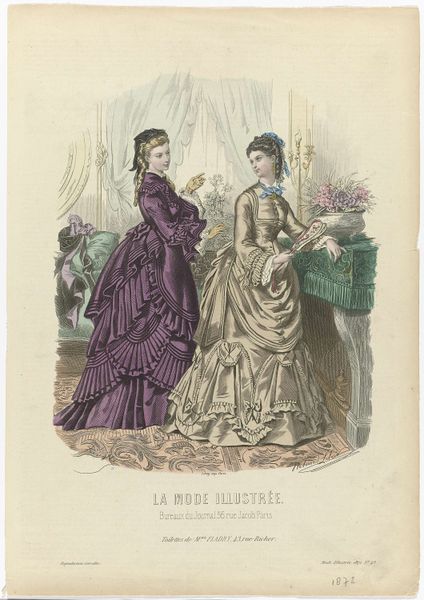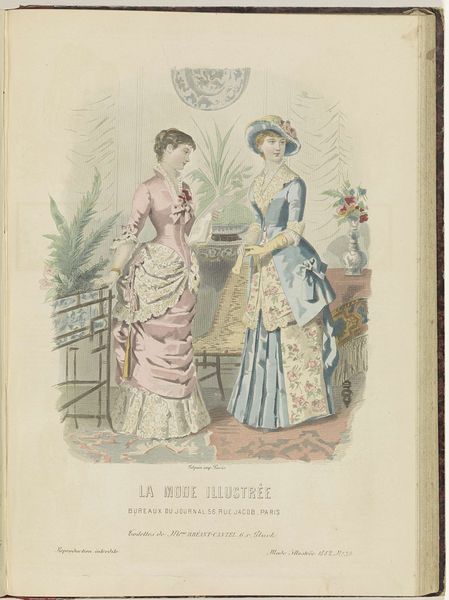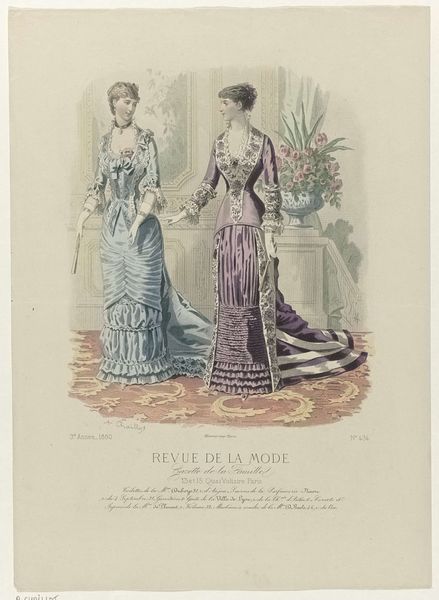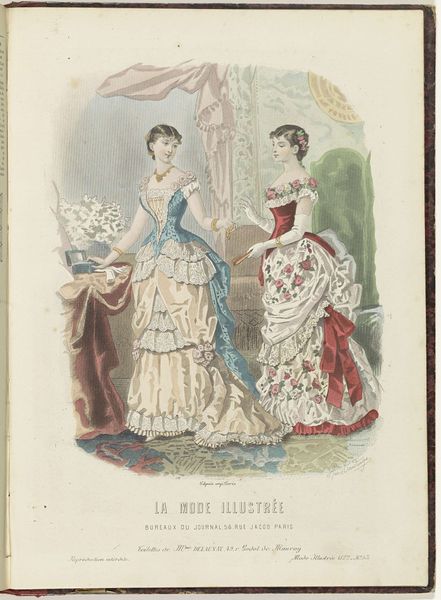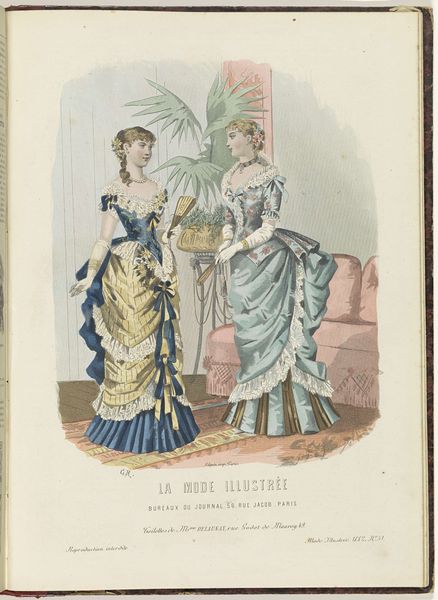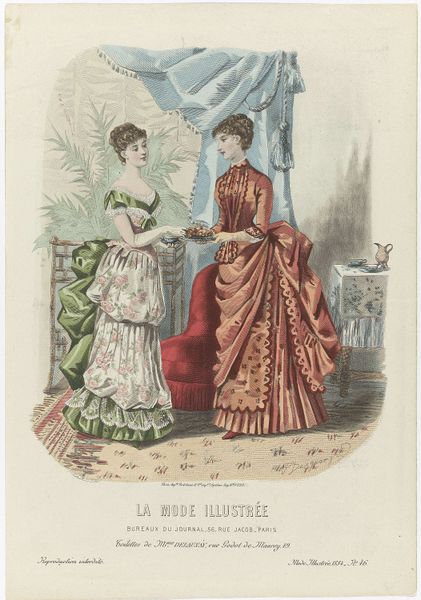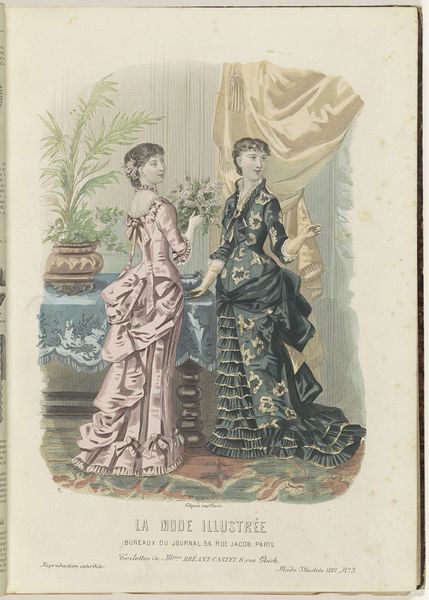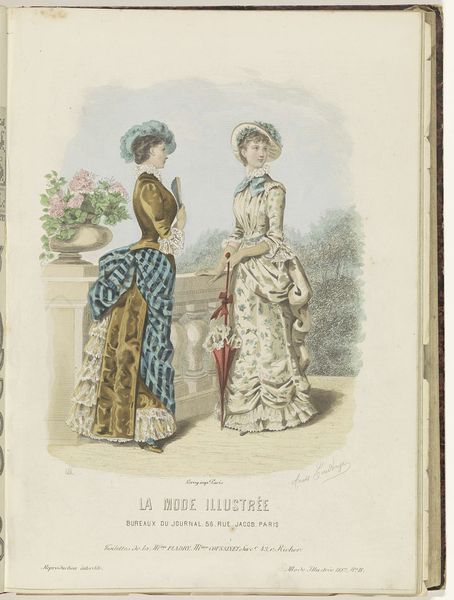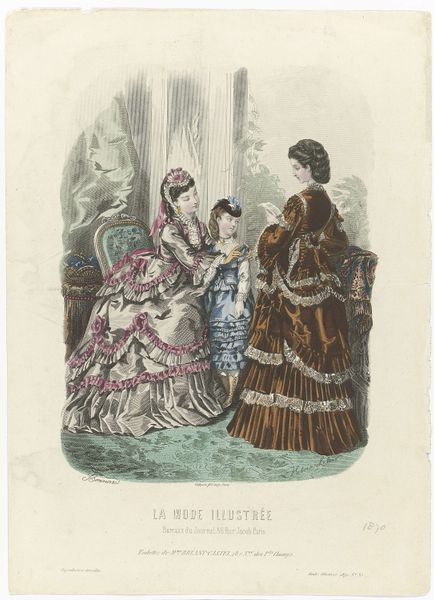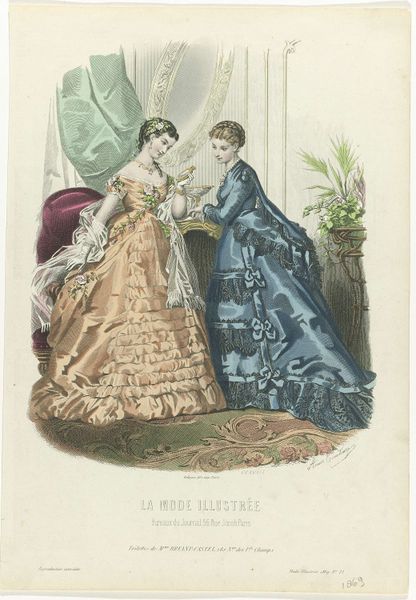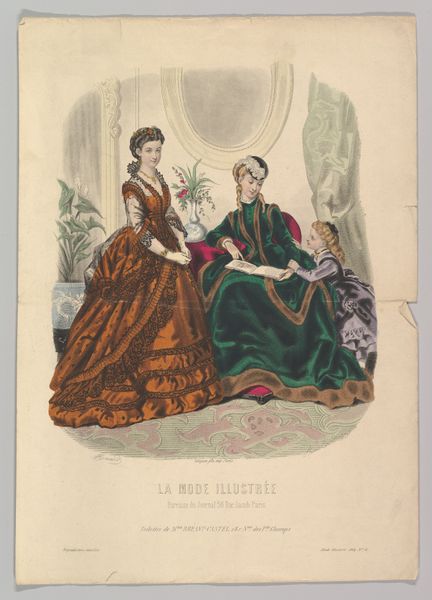
Dimensions: height mm, width mm, thickness mm
Copyright: Rijks Museum: Open Domain
Editor: Here we have “La Mode Illustrée, Journal de la Famille, 1882”, a print from 1882 housed at the Rijksmuseum and created by Firmin-Didot & Cie. It depicts three women in beautiful, elaborate dresses, and it just feels so… poised, doesn't it? Almost like a peek into another world. What catches your eye in this piece? Curator: Poised is a good word! It certainly whispers of a world governed by etiquette and spectacle. For me, it's the delightful dance between the ephemeral and the enduring. It's “just” a fashion plate, a commercial endeavor intended to sell dreams, but isn’t it more than that? Don’t the watercolors capture a spirit, a fleeting moment in time when fashion itself was performance art? How do you think it succeeds or perhaps fails to transcend its commercial purpose? Editor: That's a great point! I hadn’t considered the ephemeral versus enduring aspect. Maybe the detail in the dresses, the textures they create with the watercolors, elevate it. I mean, look at the ruffles! It’s like they’re trying to preserve these styles, not just sell them. But also... it IS very staged. Curator: Staged, yes, but consider the stage itself! A glimpse into an upper-class interior, hinting at a narrative, wouldn't you agree? Those dresses are so elaborate, it feels as though we’re seeing characters in a play, and maybe the artist is gently suggesting these women were also performing assigned roles. Does it make you reconsider their "poise," perhaps as a kind of constraint? Editor: I guess it does. I originally saw them as elegant, but now, I see the restriction. I wonder what their lives were really like? Thanks, I will remember not to assume too much from an image! Curator: Absolutely. Images are always invitations to questions, not answers. This was fun; I think I'll spend some more time pondering those ruffles... and what they're hiding!
Comments
No comments
Be the first to comment and join the conversation on the ultimate creative platform.
